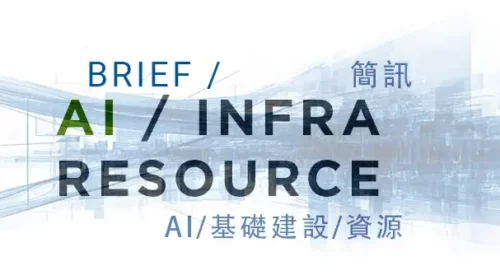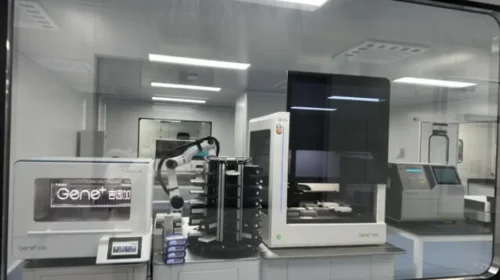How China’s AI model applications are driving a new business landscape

AI competition is shifting from models to applications, creating new opportunities in consumer and enterprise markets while reshaping industries
LeadLeo Research Institute
As the rollout of new AI model technologies marches on, the focus of innovation is moving from the models themselves toward applications. A model-driven application revolution is now transforming business paradigms and user experiences across countless industries.
As AI capabilities extend from the cloud to real-world scenarios, the pressing question for all market participants is how to precisely capture user needs, open viable commercialization pathways, and harness emerging traffic patterns. LeadLeo Research Institute recently released its 2025 China Foundation Model Application Market Insight White Paper, which analyzes the market by focusing on consumer- and enterprise-level applications, exploring core scenarios, traffic structures, differentiated demands and competitive strategies.
Application ecosystem taking shape
The report points out that in the consumer-facing market, application-layer products of large models can be divided into three categories by business maturity: more mature embedded applications, developing native AI applications, and early-stage explorations of smart hardware. Embedded applications enhance existing software to achieve more efficient monetization and are the most maturity. Native AI applications create entirely new services around the model itself, though their business models are still being tested. Smart hardware combines physical interaction with AI, holding huge potential but also facing significant cost, as well as technical and adoption challenges.
Each type follows a different value realization path: embedded applications rely on their user base for rapid monetization; native AI must prove itself through competition; while smart hardware must overcome technological, cost and user-acceptance hurdles.
Globally, consumer-facing web-based AI applications show a strong concentration effect. ChatGPT leads with nearly 4.7 billion monthly visits, followed by Microsoft’s New Bing at 1.53 billion. Together they form the first tier, while DeepSeek, Gemini, Perplexity, Character.ai, and Claude make up a second tier that still lags significantly behind the leaders.
The report states that AI chat assistants and AI search engines are the two dominant categories for web-based AI applications, accounting for over 80% of traffic. This is because information retrieval and interactive Q&A are the most frequent and fundamental online needs, and these applications efficiently fulfill them. Their broad applicability and large user base, combined with the first-mover advantage and integration with existing entry points, have helped the leading products accumulate massive users and validate their core value.
The differences between mobile apps and web-based applications largely lie in interaction and feature integration. Web applications require no installation, work across platforms, and are well-suited for quick information access and text-based interaction. By contrast, mobile apps provide smoother, more personalized interfaces and can deeply leverage hardware resources such as cameras and microphones, enabling richer integration into mobile use cases like photo editing and real-time translation.
Industry landscape reshaped
These differences between web- and app-based platforms significantly affect the global mobile AI application market. Although AI chat assistants continue to dominate with nearly 70% of MAU share, their lead and user scale are weaker than on the web. Meanwhile, AI search engine share has declined relative to web use, while AI image editing applications have surged to nearly 10% share thanks to their strong fit with mobile photography and imaging scenarios, highlighting distinct mobile user preferences.
On the consumer side, AI applications have shown strong penetration in assistants and office tools, while AI-driven creative and entertainment apps struggle with stickiness and slowing growth. Assistant-type applications are already central, with deep voice interaction and smart assistant products growing rapidly and becoming industry benchmarks. Office and creative applications such as WPS AI and AiPPT.cn have also shown strong growth, tightly integrating with productivity needs. In contrast, lifestyle and entertainment AI apps, though capable of short-term hype, often lose users once the novelty fades.
For enterprise applications, the key to successful deployment lies in aligning capabilities with needs, ensuring quantifiable ROI, and securing adequate data and computing resources. Only with these three factors in sync can enterprises unlock efficiency and sustainable value. Industries such as finance and healthcare already show great potential, sharing traits of high-value proprietary data, sufficient budgets, and clear demands, enabling meaningful benefits in automation, prediction, and decision support.
Currently, Chinese enterprises are realizing returns from AI foundation model applications mainly through improved operational efficiency. Evidence across the finance, manufacturing, and retail sectors shows impact in task automation, process optimization, and accelerated R&D. As technologies mature and scenarios expand, the value of large models is expected to shift from short-term cost reduction toward strategic growth and revenue expansion — evolving from pilot projects to deeply embedded, vertically integrated innovations at the core of business.
Nevertheless, significant challenges remain in ensuring precise alignment of models with enterprise needs. Surveys show that as many as 87% of enterprises believe current models still fall short when handling highly complex logical tasks. 62% report a lack of standardized criteria for model selection. 50% indicate a mismatch between model capabilities and business needs. 39% say that limited fine-tuning and deployment tools affect efficiency. Overall, achieving large-scale, sustainable adoption will require further progress in accuracy, standardization, industry alignment, and tool chain support.
LeadLeo Research Institute is an original content platform for research on banks and companies and an innovative digital research service provider with nearly 100 senior analysts. You can contact the platform at CS@leadleo.com.
This commentary is the views of the writer and does not necessarily reflect the views of Bamboo Works
To subscribe to Bamboo Works weekly free newsletter, click here






